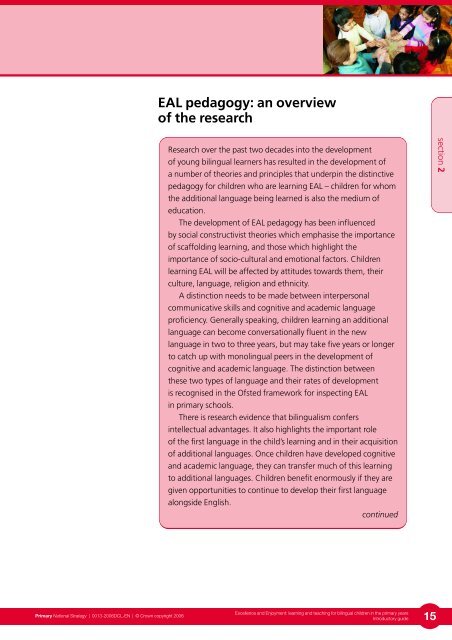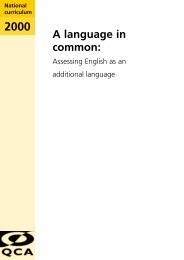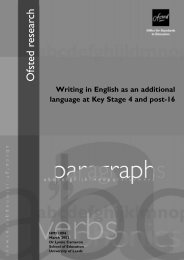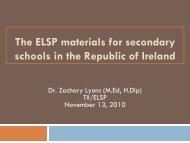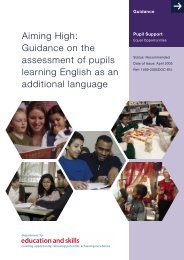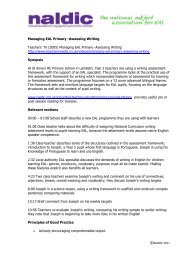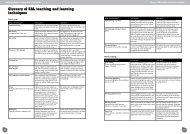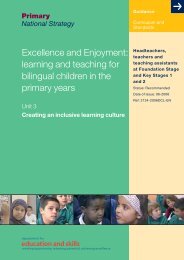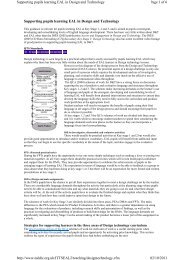Excellence and Enjoyment: learning and teaching for ... - NALDIC
Excellence and Enjoyment: learning and teaching for ... - NALDIC
Excellence and Enjoyment: learning and teaching for ... - NALDIC
Create successful ePaper yourself
Turn your PDF publications into a flip-book with our unique Google optimized e-Paper software.
EAL pedagogy: an overviewof the researchResearch over the past two decades into the developmentof young bilingual learners has resulted in the development ofa number of theories <strong>and</strong> principles that underpin the distinctivepedagogy <strong>for</strong> children who are <strong>learning</strong> EAL – children <strong>for</strong> whomthe additional language being learned is also the medium ofeducation.The development of EAL pedagogy has been influencedby social constructivist theories which emphasise the importanceof scaffolding <strong>learning</strong>, <strong>and</strong> those which highlight theimportance of socio-cultural <strong>and</strong> emotional factors. Children<strong>learning</strong> EAL will be affected by attitudes towards them, theirculture, language, religion <strong>and</strong> ethnicity.A distinction needs to be made between interpersonalcommunicative skills <strong>and</strong> cognitive <strong>and</strong> academic languageproficiency. Generally speaking, children <strong>learning</strong> an additionallanguage can become conversationally fluent in the newlanguage in two to three years, but may take five years or longerto catch up with monolingual peers in the development ofcognitive <strong>and</strong> academic language. The distinction betweenthese two types of language <strong>and</strong> their rates of developmentis recognised in the Ofsted framework <strong>for</strong> inspecting EALin primary schools.There is research evidence that bilingualism confersintellectual advantages. It also highlights the important roleof the first language in the child’s <strong>learning</strong> <strong>and</strong> in their acquisitionof additional languages. Once children have developed cognitive<strong>and</strong> academic language, they can transfer much of this <strong>learning</strong>to additional languages. Children benefit enormously if they aregiven opportunities to continue to develop their first languagealongside English.continuedsection 2Primary National Strategy | 0013-2006DCL-EN | © Crown copyright 2006<strong>Excellence</strong> <strong>and</strong> <strong>Enjoyment</strong>: <strong>learning</strong> <strong>and</strong> <strong>teaching</strong> <strong>for</strong> bilingual children in the primary yearsIntroductory guide 15


